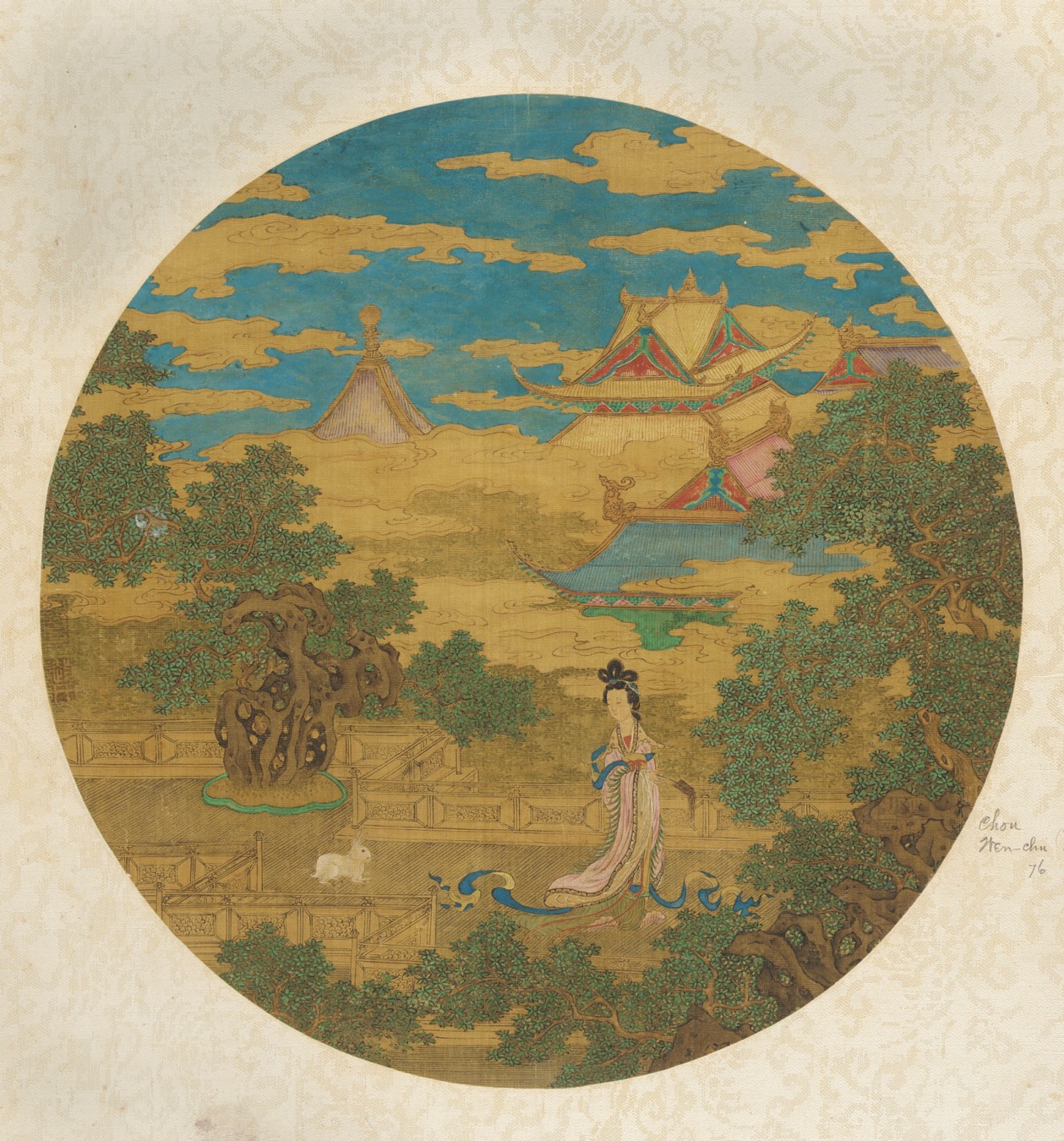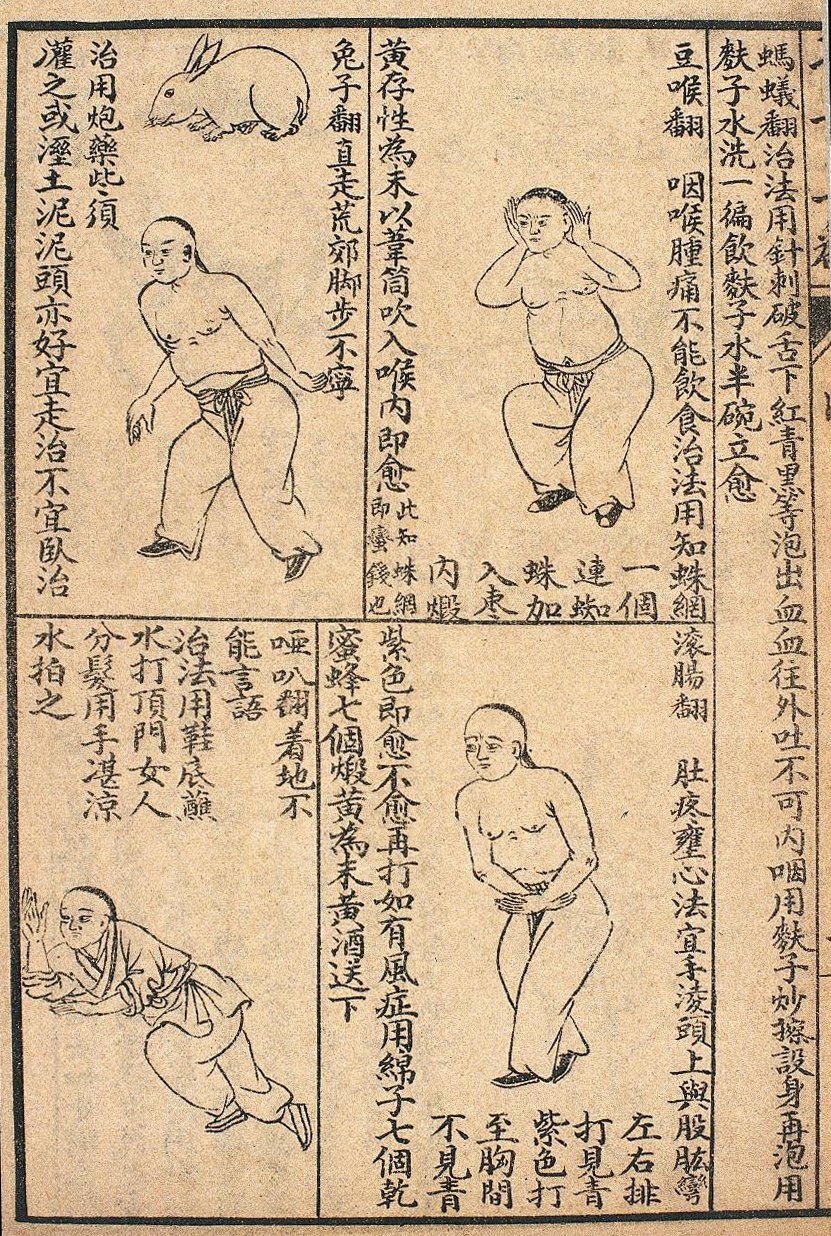Rabbits and rabbit products are in use for medical purpose in many countries across the Indian ocean. Stories about this animal were gathered and written by students. They are all part of a pedagogical project, funded by the National University of Singapore and the Université de Paris. The Bestiary site is a work-in-progress and a participatory educational tool, representing animals whose products or body parts are used to promote health and healing.

A Medical Field Contributor
A Story by Yee Yan Ling
One common use of rabbits is for animal modelling to test and improve human medicines, and to understand certain diseases and their effects.
Rabbits can be found in a wide variety of habitats, ranging from deserts to wetlands across the globe. Depending on the culture, humans relate to rabbits in varied ways, as pets, pests, or as a source of food. In Chinese culture, there are several tales about rabbits. The most popular tale is about the Heavenly Gate Race, which resulted in the twelve Chinese zodiac animals, rabbit being one of them. To be selected as one of the twelve animal guards by the Jade Emperor, animals compete in a race to reach the Heavenly Gate, where the rabbit came fourth. As a reward for reaching the Heavenly Gate, the Emperor assigned each year according to the order of the 12 zodiac animals in a cycle. It is believed that those born in a specific zodiac year have corresponding personality traits of the zodiac animal. Similar to western astrology, the zodiac is used to predict different aspects of a person’s life and character. This belief is so strong that Chinese couples are influenced to bear children in auspicious years, as seen in the baby boom during Dragon years.
Another popular folklore of the rabbit is the story of the Jade Rabbit that lives on the moon. There are several versions of how the Jade Rabbit came about, but one ancient Buddhist tale describes a selfless bodily sacrifice of the rabbit to feed a starving old man who was the Jade Emperor in disguise. Touched by the rabbit, he turned the rabbit into the immortal Jade Rabbit. Thus, the Jade Rabbit came to represent selflessness, piety and sacrifice. White rabbits in particular are also a symbol of longevity. The Chinese also regard the rabbit as an embodiment of intelligence, integrating several idioms with the term “tu” or rabbit in Chinese, to describe vigilance and agility.
Rabbits are commonly used both as a source of food as well as pets. China is the largest rabbit meat consumer in the world, with a share of 62% total rabbit meat consumption. Similarly, rabbit meat production is the highest in China, accounting 63% of total production in the world. It is a growing global industry both in terms of quantity and market value. However, even though the Sichuan province in south China is the biggest consumer of rabbit meat, rabbit consumption is considered an uncommon food source in most parts of China. In Singapore, a multi-racial country with a dominant Chinese population (~74%), rabbits are often seen as lovable pets rather than a food source. In 2019, when the first rabbit hotpot restaurant arrived in Singapore, there was an outcry among the public, voicing that rabbits are human companions. The Chinese perspective of rabbits is therefore not a homogenous one, but rather differs greatly based on location.
The Goddess Chang’e in the Lunar Palace. Artist: Formerly attributed to Zhou Wenju (傳)周文矩 (active mid-10th century). Qing dynasty, 19th century. Freer Gallery of Art
Zoonotic diseases and Medical research
The presence of zoonotic diseases in rabbits are a cause for concern because they are widely present, and sometimes live in close proximity to humans as lovable pets. These transmissions, although rare, occur through bites, scratches, or parasites (“Pet Rabbits and Your Health,” n.d.). For example, a fungal infection, Trichophyton mentagrophytes, can be passed from rabbits to humans, inflicting high inflammatory lesions in humans. One study noted that the rabbits do not show any clinical signs of infection, making them asymptomatic carriers of the disease (Overgaauw et al., 2017). Another example is the Cheyletiella sp., a non-burrowing fur mite that leads to development of focal to multifocal dermatitis in humans. Since the parasite does not reproduce on humans, the disease can be stopped once the pet rabbit is treated (Mitchell & Tully, 2012). Due to the presence of domestic rabbits as pets, and being a source of food, zoonotic diseases between the rabbits and human population needs to be taken seriously to avoid widespread infection.
Rabbits are used in the medical field. One common use of rabbits is for animal modelling to test and improve human medicines, and to understand certain diseases and their effects. Though rodents are increasingly used to study human illnesses, there are certain irreplaceable benefits that rabbits provide as animal models. For example, the immune genes of rabbits are more similar to human immune genes, giving a more accurate immune response that correlates to human immunology (Esteves et al., 2018). In another study, rabbits were used to study dry eye diseases for their larger eyes compared to mice and resemblance of the lacrimal glands to those of humans, enabled better evaluation for safety and efficiency of novel treatment options (Swati et al., 2021).
To allow for better modelling, rabbits are also genetically modified to increase their functional applications in the field of biomedical research. A living example is the NuRabbits, created recently through CRISPR-Cas9 technology, which tampers with the rabbit’s genetic code directly. By producing characteristics such as immunodeficiency, the modified rabbit model allows studies that would otherwise be impossible, such as studies on tumour growth, which can be fought by a functioning immune system (Song et al., 2021).
Early C20 Chinese Lithograph: ‘Fan’ diseases. Wellcome Collection
References
Smith, A. T. (2021, March 29). “Rabbit”. Encyclopedia Britannica.
Rebecca, L. (2012, January 20). “Enter the dragons: A baby boom for Chinese across Asia”. BBC.
“Mythistory: The Legend of the Jade Rabbit”. (2021, September 12). Shen Yun Performing Arts, (retrieved October 31, 2021).
Fercility, J. (2021, October 2). “The Chinese zodiac story – The zodiac rankings race”. China highlights.
Fefe, C., & Chloe, C. (n.d.). “Year of the rabbit. Chinese new year”, (retrieved October 31, 2021).
“Global rabbit meat market has increased and will continue to grow”. (2019, May 16). New food magazine, (retrieved October 31, 2021).
Clarissa, W. (2018. July 13). “Sichuan alone consumes more than half of rabbit meat in China”. Goldthread.
Singapore demographic profile. (n.d.). Indexmundi, (retrieved October 31, 2021).
Chinese culture about rabbit. (n.d.). Chinadaily, (retrieved October 31, 2021).
Esteves P. J., Abrantes J., Baldauf H. M., Lbachir B. M., Chen Y., Neil C., Javier G. G., Lorenzo G., Lu J. I., Kaplan G., Keppler O. T., Knight K. L., Kong X. P., Lanning D. K., Pendu J. L., Lemos de Matos A., Liu J., Liu S., Lopes A. M., …Mage R. (2018). “The wide utility of rabbits as models of human diseases”. Experimental & Molecular Medicine, 50(5), 1-10. 10.1038/s12276-018-0094-1
Mitchell M. A. & Tully T. N. (2012). “Ferrets, Rabbits, and Rodents” (Third Edition), Chapter 40 – Zoonotic Diseases. Clinical Medicine and Surgery, 557-565.
Overgaauw P. A. M., van Avermaete K. H. A., Mertens C. A. R. M., Meijer M. & Schoemaker N. J. (2017). “Prevalence and zoonotic risks of Trichophyton mentagrophytes and Cheyletiella spp. in guinea pigs and rabbits in Dutch pet shops”. Veterinary Microbiology, 205, 106-109.
“Pet rabbits and your health”. (n.d.). Rabbit welfare association & fund, (retrieved October 31, 2021).
Song, J., Hoenerhoff, M., Yang, D., Yang, Y., Deng, C., Wen, L., Ma, L., Pallas, B., Zhao, C., Koike, Y., Koike, T., Lester, P., Yang, B., Zhang, J., Chen, Y. E., & Xu, J. (2021). Development of the nude rabbit model. Stem Cell Reports, 16(3), 656-665.
Singh, S., Sharma, S., & Basu, S. (2021). Rabbit models of dry eye disease: Current understanding and unmet needs for translational research. Experimental Eye Research, 206, 108538-108538.

Moon Gazing Gravel
A Story by Zheng Zuda
“The dried faeces of the same rabbit species are also used in TCM to cure malnutrition and also haemorrhoids. It was also given a name of “望月砂” meaning moon gazing gravel. The name also came from the story of Chang e and Yu Tu and also the shape of the medicine.”
The rabbit, placed fourth in the twelve Chinese zodiac animals, has appeared to be one of the most romantic animals in Chinese culture. It has appeared in multiple mythical stories and the two most famous would be the story of the zodiac, and the story of “Change”, the fairy who lives on the moon. Other than the beautiful stories it carries, the rabbit also contributes tremendously in both the scientific and the medical fields.
In the mythical story, the imperial palace orders a race among the animals in order to rank them in the zodiac; among all the animals, only twelve will be selected. The rabbit, being one of the fastest animals, woke up early on the day of the race and sprinted towards the palace. Halfway through the trip, the rabbit realised that no other animals had caught up, so it took a nap along the way. As the tiger ran past it, the rabbit was woken up and tried to catch up. Due to its complacency, the rabbit only managed to secure the fourth position, right behind the tiger.
However, there is also another saying whereby the day is divided into 12 parts, each part being 2 hours, and each of the zodiac animals representing each part of the day. The rabbit, chosen to be the fourth, also known as 卯时 (Mao Shi), which is from 5 am to 7 am in present time. It is that the time of the day when the rabbit comes out to seek food. Also, every two animals are a pair representing Yin Yang (阴阳) in the Chinese Taoism culture. Paired with the rabbit, is the third animal, the tiger. This is because Tiger represents bravery and rabbit represents cautiousness. In Taoist sayings, a person must be brave and cautious at the same time, one cannot be only brave as that would mean being reckless and one cannot be overly cautious or that would mean missing the many opportunities that comes one’s way.
The other famous mythical story known by all Chinese is the rabbit Yu Tu (玉兔) that lives on the moon. Yu Tu was believed to be the pet of the moon fairy, Chang e (嫦娥). It was believed that in the ancient times, there was a rabbit that had lived for a thousand years. One day the rabbit was summoned by the imperial palace and there he came across Chang e who was caught by the celestial guards for consuming the forbidden elixir. Chang e was imprisoned in the moon palace alone and when the rabbit got to know it, he went back to his family and sent the youngest child to accompany Chang e. The rabbit, embodied with a coat of white fur, looking as pure as the jade, gained the name Yu Tu which means the Jade Rabbit in English. In China, the recent space shuttle that was launched to collect a soil sample from the moon was named “Chang e” because of this beautiful mythical story.
Other than the mythical stories told, rabbits are also sacrificed for scientific research because they are mild-tempered and easy to handle and confine. Furthermore, they are easy to breed and for that, a large number of rabbits are abused for laboratory purposes every year. Rabbits are mainly tormented in the notorious Draize eye irritancy test, in which cosmetics, dishwashing liquids and other substances are dripped into the rabbits’ eyes causing redness and swelling.
Compared to scientific experiments, Traditional Chinese Medicines (TCM) also makes use of rabbits to cure certain illnesses. Rabbits in China, mainly the meat of the Lepus Mandschuricus Radde and Lepus Sinensis Gray, are used to cure nausea, stomach-ache and also erysipelas. Also, the dried faeces of the same rabbit species are also used in TCM to cure malnutrition and also haemorrhoids. It was also given a name of “望月砂” meaning moon gazing gravel. The name also came from the story of Chang e and Yu Tu and also the shape of the medicine.
Value in Asian medicine
Rabbits that are housed outdoors, captured from the wild or that are purchased from a pet store may carry zoonotic diseases. Zoonotic diseases specifically associated with rabbits include pasteurellosis, dermatophytosis, mycobacteriosis, cryptosporidiosis and external parasites. Rabbits can transmit bacteria through bites and scratches and they have very sharp teeth and claws which could cause an external wound on humans very easily. Even if rabbits are carriers of zoonoses, they don’t appear sick (even when they are), hence it is hard for us to determine if a rabbit carries any diseases, but the zoonoses that rabbits carry can cause serious illness in humans. Furthermore, people with medical conditions such as chronic illness, immunodeficiency and pregnancy may be at higher risk of developing disease or complications from a zoonotic disease related to rabbits.
One of the common agents involved is Pasteurella multocida, a bacterium that resides in the oral cavity and upper respiratory tract of rabbits. Human infection is generally associated with a rabbit bite or scratch and it is generally characterized by local inflammation with occasional abscess formation and ascending infection with systematic symptoms.
Dermatophytosis is a fungal skin infection commonly known as “ringworm” and is seen in both animals and people as scaly round areas of hair loss. Transmission of ringworm is by direct skin-to-skin contact with an infected animal. Cheyletiella parasitovorax and related species are non-burrowing skin mites of rabbits that can be transmitted to people by handling and touching the infested rabbit causing transient dermatitis. Symptoms in both rabbits and people are moderate hair loss and scaly skin. Other possible external parasites such as fleas, ticks and lice are occasionally transmitted by close contact with an infected rabbit or the handling infested beddings.
Cryptosporidiosis is an intestinal protozoal infection acquired by contact and accidental ingestion of faecal material from infected animals. Rabbits infected with this disease typically have diarrhoea but some animals may not show signs or symptoms of such disease. Hence any rabbit that suffers from diarrhoea should be suspect of having a zoonotic disease. In humans, infection varies from no symptoms to mild gastrointestinal symptoms to marked watery diarrhoea. The infection is generally self-limited and lasts a few days to about two weeks. In immunocompromised individuals, the illness is more severe.
Pygmy rabbits (Brachylagus idahoensis) may be infected with Mycobacterium avium complex (MAC). Transmission of MAC to humans occurs primarily through aerosolization and inhalation of the agent in contaminated soil; however direct contact and accidental ingestion of urine and faeces of infected pygmy rabbits is another potential route of infection. Humans infected with MAC may develop lymphadenitis and pulmonary disease similar to tuberculosis or more severe disseminated disease. People with immunodeficiency have increased susceptibility to disseminated MAC infection and should consult with their personal physician before working with pygmy rabbits.
Individuals who are exposed to animals and animal environments may develop allergic reactions to animal proteins (allergens). Approximately 20 to 30 percent of individuals working with laboratory animals will develop an allergic reaction to allergens and 5-10 percent will develop asthma. Personnel may be exposed to allergens through inhalation and contact with skin, eyes and mucous membranes. Animal allergens may be present in animal dander, hair, skin, urine, saliva, serum and any contaminated feed or bedding materials. Risk factors for developing an allergic reaction include the history of previous allergies to animals. The signs and symptoms of an allergic reaction are nasal discharge and congestion, conjunctivitis, tearing and eye itching, skin redness, rash or hives and lower airway symptoms (coughing, wheezing and shortness of breath).
There are also many other diseases that are associated with rabbits, some of them include Brucella suis biotype 2, cheyletiella infestation, francisella tularensis, plague, Q-fever, and trichophyton mentagrophytes. These diseases are not commonly associated with laboratory rabbits, however. In the table below, the route of transmission, as well as the clinical symptoms of some common diseases, would be discussed.
Table 1: Common disease associated with rabbits
Pathogen / disease |
Transmission Routes |
Clinical Symptoms |
Plague |
Flea bite, skin abrasions or bites |
Fever, chills, cephalalgia, nausea, generalized pain, diarrhea, constipation, toxemia, shock, arterial hypotension, rapid pulse, anxiety, staggering gait, slurred speech, mental confusion, prostration |
Q-fever |
Aerosols, birthing byproducts, dust, leather, wool, tick bite |
Fever, chills, profuse sweating, malaise, anorexia, myalgia, nausea, vomiting, cephalalgia, retro orbital pain, slight cough, mild expectoration, chest pain |
Francisella tularensis |
Ingestion of contaminated water and food, aerosols, scratch, bite, tick |
Rising and falling fever, chills, asthenia, joint and muscle pain, cephalalgia, vomiting, ulceroglandular |
Having mentioned the many zoonoses that rabbits carry, rabbits still contribute largely to the medical sector and both the western and eastern makes use of this docile animal. Many western countries, especially the US, makes use of rabbits for animal testing for new drugs and rabbits are also used to test for allergens too. While in the east, China makes use of the rabbit itself and its faeces as a form of medicine in TCM.
In this forum, we will only be focusing on the faeces of rabbit, which is rather less known. Although it is called rabbit faeces, only faeces of two types of rabbit can be made into medicine. These two species are namely Lepus tolai Pallas and L. mandschuricus Radde, and these two species are habituated around DongBei and HuaBei of China. As the rabbits in these two areas have a diet on herbaceous plants and that results in their faeces being ‘herbaceous’ too.
Rabbits have two different kinds of faeces, and the first type is called the caecotroph and this is the type of faeces that the rabbits eat the moment it is produced. The second type is the single rabbit pellet faces which are more commonly seen in hutches and runs and it often comes in light brown and it is also smaller and drier than a caecotroph. The second type of faeces is used in TCM and it is often collected during autumn and winter. In order to attain the medicine, the faeces have to be washed clean and remove any impurities such as undigested hay, dust or even small gravel. The cleaned faeces would then have to be dried up and it would come in a spherical shape with a diameter of about 0.6 to 1.5cm. It would appear to be light brown or brownish-yellow with a rough surface and it also contains herbaceous fibre.
These faeces are often used to cure haemorrhoids and also short-sightedness. When curing haemorrhoids, it is often ground together with mastic and consumed with an empty stomach. While curing short-sightedness, it is usually ground and consumed alone. The taste of it is described to be bitter and sometimes spicy.
While rabbits carry multiple zoonoses, due to their appearance, many still keep rabbits as pets. In order to avoid getting infected, one has to make sure to avoid getting bitten and scratched by them. Hence, it is important to trim the teeth and nails of pet rabbits. However, we must not forget the fact that rabbits contribute largely to our medical sector be it research or medications [MK1].
References
“Rabbit”. (n.d.). American Anti-Vivisection Society, (retrieved November 19, 2021).
“This information sheet is for the care and use of rabbits”. (n.d.). Environment Health and Safety.
Dykes, L. (2011 December). “Pet rabbits and your health”. Rabbit Welfare Association & Fund, (retrieved November 19, 2021).
“Seven things you should really know about rabbit poo”. (n.d.). Supreme Pet Foods, (retrieved November 19, 2021).
“Rabbits: Blinded for beauty”. (n.d.). Humane Society International, (retrieved November 19, 2021).




